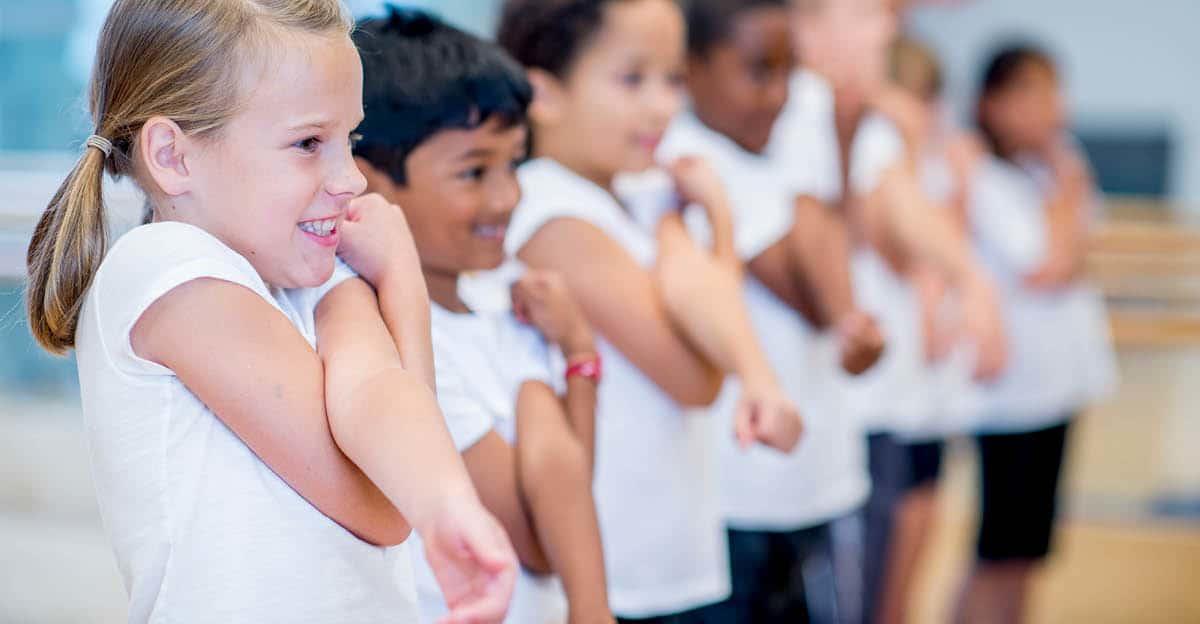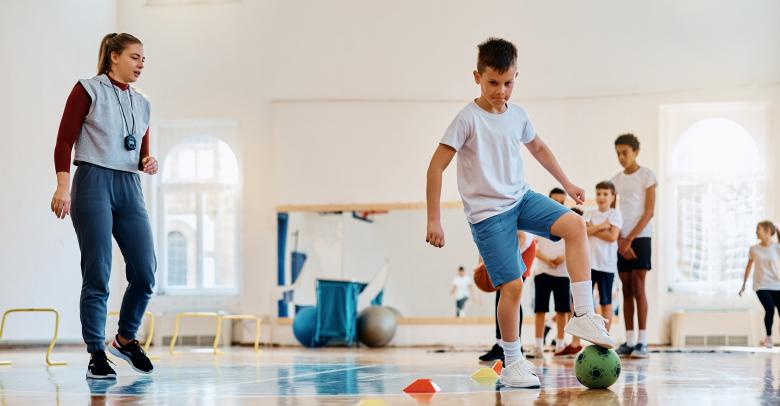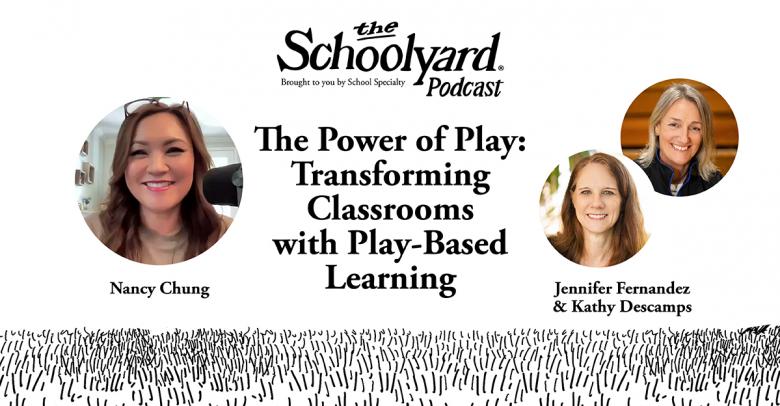Phospholipid bilayers? Pythagorean Theorem? The Lusitania? Kennedy Who?
And so it goes. Students in every grade level at schools across the country are struggling in class. It’s not because they’re underachievers, they’re not smart, or they don’t care. It’s because we’re working against them. The longer children and teens are forced to sit and grow roots in their chairs, the harder it will be for them to bloom.
More Physical Activity May Mean Improved Student Scores
There is myriad research that proves that students need adequate amounts of physical activity throughout the school day—not only does it prevent obesity and obesity-related issues, but students also perform better academically.
Just ask the CDC, Columbia University, the New York City Health Department and Department of Education, the Universities of Illinois, West Virginia, and California.
They’ve all published research that stands behind the need for physical education in the school system.
The CDC states, “…physical activity can have an impact on cognitive skills and attitudes and academic behavior, all of which are important components of improved academic performance. These include enhanced concentration and attention as well as improved classroom behavior.”
And there’s more. Active Living Research says, “In some cases, more time in physical education leads to improved grades and standardized test scores.” In schools that are under government mandates to bridge the achievement gap (and when those mandates encourage “teaching to the test”), physical education can actually help improve students’ scores.
Unfortunately, many schools cut physical education class and PE funding with the belief that more rigid classroom time would somehow stimulate students to learn more. It’s an incorrect belief, and there’s scientific evidence to prove it.
Exercise is Important to Development of Academic & Social Skills
Exercise directly impacts the behavior and development of the brain. “It is likely that the effects of physical activity on cognition would be particularly important in the highly plastic developing brains of youth,” according to a 2010 essay penned by Charles Basch of Columbia University.
He summarized how exercise may affect executive functioning:
- Increased oxygen flow to the brain
- Increased brain neurotransmitters
- “[Increased] brain-derived neurotrophins that support neuronal differentiation and survival in the developing brain.” Neurotrophins assure the survival of neurons in areas responsible for learning, memory, and higher thinking.
Physical activity has benefits beyond improved grades, too. Basch extrapolates current research and connects physical activity to absenteeism, drop-out rates, and social connectedness.
“Drop-out rates were lower for youth who consistently participated in interscholastic sports,” he writes, though he cautions that forcing kids to join sports won’t solve the drop-out problem that plagues many inner city schools, it simply may foster an environment of connectedness that could keep at-risk students attending school.
That’s the core of it all; that’s why we’re here. We want our students to get a quality education, even though their life situation or choices often make it difficult. But every child, regardless of financial background, should have equal access to excellent education.
It’s not good enough to push them through the school system and let them fend for themselves in the real world. We must use their formative years to give them the tools they can use to survive and provide for their own families. When they have children, they’ll be able to pass on knowledge we gave them. We’re creating a positive future for generations to come.
Responding to Research on the Importance of PE
So what can school districts do to inject more activity and movement into the school day?
First, administrators must let go of the dated idea that PE must take a backseat.
“There is currently no evidence indicating that this strategy is, in fact, effective in increasing standardized test scores,” according to the Columbia University essay. “In fact, a growing body of evidence shows that increased time for physical education and other school-based physical activity programs is associated with either a neutral or positive impact on academic outcomes.”
By the way, Columbia University is ranked among the leaders in the top-tier of best research universities in the U.S.
The evidence is clear. Physical activity should have a place in the curriculum of every school that’s serious about teaching its kids.
SHAPE America recommends 60 minutes of physical activity each day for children and adolescents. Schools should provide 150 minutes per week of instructional physical education for elementary school children, and 225 minutes per week for middle and high school students throughout the school year.
Adequate PE curriculum can help children achieve these numbers, in turn creating healthy bodies and eager-to-learn minds. Adequate physical education doesn’t stop there; it sets children up for a healthy adulthood, perpetuating a cycle of well-being for generations to come.
What’s the missing link between reducing obesity and increasing America’s ability to compete in a tough global economy? Physical education.
More PE Teacher Tips and Inspiration
Looking for more ways to get your students engaged and active? Help to teach your students the value of physical health and wellness by giving them positive experiences in PE class. Not only will these learning experiences help to encourage a healthier lifestyle, but it will also play a positive role in boosting academic performance and learning capabilities well beyond the PE classroom.






[…] stated before, exercise not only benefits students physically, but also academically. When we exercise, we increase the flow of oxygen to the brain, increase its number of neurotransmitters, and […]